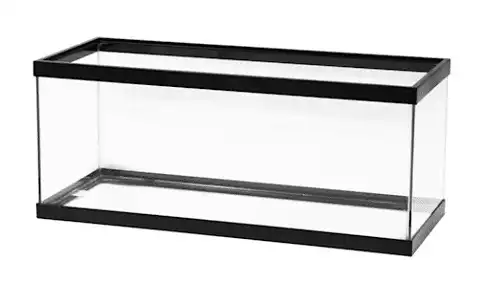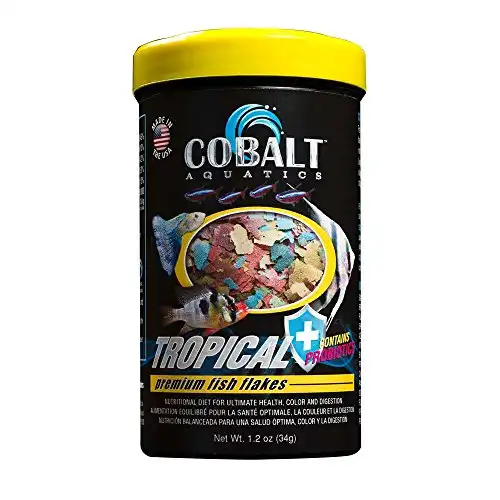Thank you for visiting! By the way… any links on this page that lead to products on Amazon and other stores/partners are affiliate links Aquarium Store Depot earns a commission if you make a purchase.
One of the most popular types of fish for home aquariums is the platy. There are many types of platy fish available in the hobby with a range of colors and patterns. They range from bright colors, to dark, from plain to metallic looking. If you’re looking to add a platy to your tank, take a look at some of the options below. We’ve included pictures (and even videos!) so you can get an idea of what each type looks like. Let’s get started!
A Quick Overview Of The Platy Fish
| Scientific Name | Xiphophorus maculatus |
| Common Names | Platy fish, moonfish, southern platy fish |
| Family | Poeciliidae |
| Origin | Mexico, Nicaragua, Guatemala, and Belize |
| Diet | Omnivore |
| Care Level | Very easy |
| Activity | Moderate |
| Lifespan | 3 – 5 years |
| Temperament | Peaceful |
| Tank Level | Mid and top level |
| Minimum Tank Size | 10 gallons |
| Temperature Range | 64 ° to 77 °F |
| Water Hardness | 10 – 25 KH |
| pH Range | 7.0 – 8.2 |
| Filtration/Water Flow | Moderate |
| Water Type | Freshwater |
| Breeding | Livebearer |
| Difficulty to Breed | Very easy |
| Compatibility | Community tanks |
| OK, for Planted Tanks? | Yes |
Introduction to Platy Fish
Platy fish have been a longtime favorite in the freshwater aquarium hobby. These freshwater fish have bold personalities, vibrant colors, and can bring tons of excitement to the community aquarium. They are considered the ultimate beginner fish species, though they are kept by hobbyists at all levels. However, some more experienced hobbyists tend to avoid platies due to their high bioload and reproduction rates.
That being said, the aquarium hobby has taken the traditional platy fish, Xiphophorus maculatus, and transformed the species into an array of color variations and patterns through selective breeding. Today, there are dozens of platy fish varieties available with little to no additional need for extra care.
How Many Types of Them Are There?
There are over 30 different species in the Xiphophorus genus. Only 3 of these have made their way into the aquarium hobby:
- platy fish (Xiphophorus maculatus)
- swordtail platy fish (Xiphophorus helleri)
- variatus platy fish (Xiphophorus variatus)
Regular platy fish are the most common species to come across and have been selectively bred to express the most colors.
How To Identify
Platy fish are very easy to identify, though they can be more difficult to tell apart from each other.
These fish grow to be about 2-3 inches at mature size; some dwarf varieties, like the dwarf red coral platy fish, grow to be even smaller than this at full size. Platy fish have a relatively long body with a rounded tail fin. Females will have round stomachs, especially if they are pregnant.
Differences between male and female platies can be difficult to see. Male platy fish have a much more slender, torpedo-shaped body while female platy fish are larger overall. Males also possess a gonopodium (photo source), which is a straightened anal fin for reproduction purposes. In contrast, females have a rounded anal fin.

Are Swordtails Platies?
You may have noticed the similarities between swordtails and platies, namely their body shapes and colors. But how related are these freshwater fish to one another?
These fish are very close and are in the same genus. Platy fish are Xiphophorus maculatus while swordtails are Xiphophorus helleri. They originate from similar areas throughout Central America and can even interbreed. This makes the platy fish and swordtail very similar to care for.
Origin and Habitat
Platy fish are no longer collected from their natural habitats for the aquarium hobby due to their high reproduction rates. This has led to sustainable distribution as well as much hardier, healthier fish.
Platy fish originate from Central America, namely Mexico, Nicaragua, Guatemala, and Belize. There, they are found in freshwater streams and rivers with varying conditions. They mostly prefer slow-moving water conditions with dense vegetation near the bank where they can feed and reproduce.
Because these are very adaptable and hardy fish, the platy fish has since established populations in the United States. This is most likely due to releases from fish farms and the aquarium hobby.
The platy fish is also an important model organism for studying genomics.
Care
Platy fish are one of the easiest freshwater fish to keep in the aquarium. The biggest problem hobbyists run into with these fish is overpopulation; they don’t need much to be happy and they are very likely to start reproducing almost immediately.
Otherwise, platy fish are incredibly easy to care for, though they need a good aquarium setup for long-term success.
Aquarium Setup
Platy fish can be kept in a simple beginner tank setup or a complex aquarium with high-end species. They are compatible with nearly every community fish species and will leave plants and invertebrates alone.
Platy fish can be kept on either a sand or gravel substrate. They can be messy fish so it is important to keep the substrate vacuumed to prevent detritus from accumulating and affecting water conditions.
Tank Size
Though easy to keep, platy fish are one of the larger and messier beginner fish species to keep. As we’ll see, they also do best in small group settings, which means that they need a larger aquarium setup. The recommended minimum tank size for a platy fish is 10 gallons.
Platy fish are moderately active fish and will mostly stay in the middle and top portions of the water column, though these fish won’t hesitate to travel to the bottom of the aquarium to search for food or investigate tank mates. They can be seen darting back and forth across the tank, waiting to be fed. Because of this, a longer tank is better than a taller tank.
Preferably, platy fish will be kept in at least a 20 gallon long community aquarium. This allows for multiple platies to be kept together and any potential fry.
A classic 20 gallon aquarium in its 30 inch long variant. A very popular aquarium.
Water Parameters
Platy fish are very hardy fish and will survive most beginner’s mistakes when it comes to water parameters and tank maintenance. Still, they will not tolerate traces of ammonia or nitrite in the aquarium but can tolerate small imperfections here and there.
An interesting factor of platy fish water quality is that they prefer slightly more basic parameters. As opposed to many other Central and South American species of tropical fish that prefer lower pH levels, platy fish need a pH between 7.0-8.2.
Like other species though, platy fish are largely tropical and need to be kept in warmer, consistent water temperatures despite the recommended range being 64°F to 77°F. It is best to keep them at the higher end of this range to allow for more tank mate options. An aquarium heater is also highly recommended to keep conditions stable and prevent stress.
Filtration and Aeration
Platy fish can’t have too much filtration power. They can be messy fish and it’s better to have a filter that is rated for at least 2x the size of the aquarium; a sponge filter, hang on the back filter, or canister filter will be sufficient for a platy fish community.
In the wild, platy fish are found in relatively slow-moving currents. However, most platies have been bred in aquarium fishkeeping conditions for years, making them adapt to varying water currents. These are strong fish that can easily–and might even enjoy–swim against a stronger current from a filter or powerhead.
Additional aeration is usually not necessary as long as there is good surface agitation. An air pump with a bubbler may be added to help bring movement to dead zones or to the surface of the water.
Lighting
Unlike some other tropical fish that originate from very dark and dimmed blackwater systems, platy fish do well in all lighting conditions. This is especially great for hobbyists looking to keep more light-demanding plant species where some other freshwater fish might be too photosensitive.
In general, the recommended lighting for platy fish will depend more on the types of live plants being kept.
Aquatic Plants and Decorations
Platy fish are omnivores, meaning they eat a variety of plant and meat-based foods. For the most part, these fish won’t touch the live plants growing in your aquarium. However, if they’re underfed, they may begin to nip at what’s available to eat.
Platy fish mainly stay towards the top of the aquarium. They will appreciate rock and driftwood structures to forage for food, but don’t depend on them to hide. If you find that your fish is hiding behind objects in the tank or sticking to the shadows, then there might not be enough hiding spots available.
Community Tank Mates
One of the best things about platy fish is that they can be kept with nearly every type of community freshwater fish. This includes:
Some hobbyists have even been successful at keeping platy fish with some of the less aggressive species of cichlid!
It is not unheard of for platy fish to be fin nippers. Usually, this behavior diminishes in time, but providing more hiding spots, increasing feedings, or adding more individuals to the group can help lessen the aggression.
How Many Should Be Kept Together?
It is recommended to have at least 3 to 6 platy fish in a tank. They will not display tight schooling behavior, but they will interact with each other and have bolder personalities. That being said, hobbyists have also had success keeping a solitary platy fish without any problems.
As mentioned before, platy fish enjoy being kept in small groups. This can definitely become problematic once these fish start to breed. To help prevent overpopulation, it is possible to have a group of only females, though it can be difficult to tell the sexes apart.
It should be noted that platy fish are able to breed with other members of Xiphophorus, like swordtails. This would result in a hybrid fish, which is not always supported by the aquarium community.
Food and Diet
Platy fish will eat anything. They are not picky eaters and will enjoy an assortment of live, frozen, and freeze-dried foods. They may be given a high-quality fish flake food or pellet; they will gladly chase after pellets that fall through the water column and won’t hesitate to eat off the substrate.
Best Tropical Fish Flake Food
Cobalt offers a premium level flake food with probiotics. A color enhancing formula that works great for all tropical fish
Breeding
Platy fish will quickly breed on their own, which can quickly become problematic for hobbyists with full tanks.
These fish are livebearers. The male will chase down a female until they have mated. If successful, the female will develop a round belly and spawn shortly thereafter. The fry will likely survive in the same tank as long as there are hiding spots in the form of live plants or other structures.
Once bigger, the fry should be removed to prevent further breeding.
Can Platies Breed With Other Fish?
As mentioned before, platies can breed with other fish that are in the same genus. To prevent hybrids, hobbyists usually only keep one species of Xiphophorus in the same tank.
15 Different Types
Apart from the 3 separate species of Xiphophorus fish, there are many types of platy fish! Each of these fish has the same easy care requirements and can go in most community tank setups.
1. Blue Mickey Mouse Platy
- Adult Size: 1 to 2 inches
- Color Pattern: Blue body color
- Unique Traits: Mickey mouse tail fin pattern
The blue mickey mouse platy fish is sapphire blue, sometimes with dark fins. These fish are especially popular for their Mickey Mouse markings with a circle at the base of the tail fin with two dark spots at either end of the tail, making for a caricature of the famous cartoon.
2. Gold Wagtail Platy
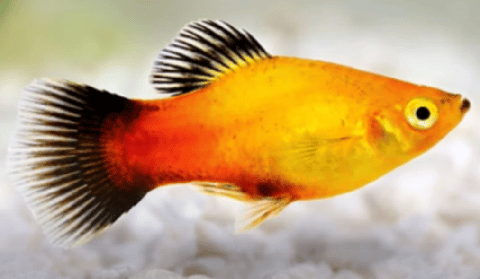
- Adult Size: 1 to 2 inches
- Color Pattern: Solid orange body color
- Unique Traits: Black fins
The gold wagtail platy fish is a very plain platy, but with lots of color. These fish have an orangey-yellow body with black fins. Black speckles may sometimes be apparent across the body as well.
3. Gold Twin Bar Platy
- Adult Size: 1 to 2 inches
- Color Pattern: Solid yellow body color
- Unique Traits: Twin bar pattern
The gold twin bar platy is a beautiful shade of yellow. They are named the twin bar platy fish due to the two black stripes on the margins of their caudal fin. Their dorsal fin may sometimes be darker in color as well.
4. Metallic Green Lantern Platy
- Adult Size: 1 to 2 inches
- Color Pattern: Metallic green
- Unique Traits: Intense metallic coloration
Sometimes known as just the metallic green platy, these freshwater fish shine in any aquarium, literally! The metallic green lantern platy has a beautiful display of blues and dark greens with a metallic sheen. Their bellies and fins are usually white in color.
Some of these types of platy fish have color variations that have been bred to express hints of orange and yellow under the green base color to resemble a glowing light.
5. Panda Platy
- Adult Size: 1 to 2 inches
- Color Pattern: White and black
- Unique Traits: Rare coloration
It is rare to come across white fish, but the panda platy fish (video source) is one of the few. These fish are half white and half black with their black tail earning them their name. Some black may be present on the rest of the body, but more defined lines usually indicate a higher quality fish.
6. Rainbow Wagtail Platy
- Adult Size: 1 to 2 inches
- Color Pattern: Red, green, and orange body color
- Unique Traits: Black fins
Admittedly, the rainbow wagtail platy fish doesn’t always meet up to hobbyists’ expectations. In theory, these fish are a beautiful blend of greens, oranges, and reds with black fins, but the intensity of their colors often falls flat.
That being said, a rainbow platy looks just like a rainbow of color in the aquarium given the right lighting and diet.
7. Hi-Fin Platy
- Adult Size: 1 to 2 inches
- Color Pattern: Most
- Unique Traits: Extended dorsal fins
The hi-fin platy fish (video source) refers to any platy that has been bred to express extra-long dorsal fins. They can be found in many typical platy fish colors, but most of the more designer patterns will be limited.
Sometimes, these extended fins can make swimming more difficult. It is recommended to have a lower water current than usual for these platy fish varieties.
8. Sunset Platy
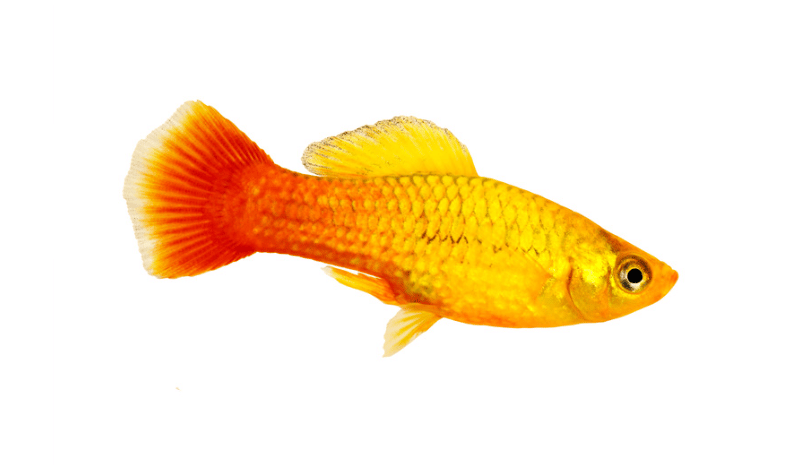
- Adult Size: 1 to 2 inches
- Color Pattern: Red, yellow, and orange
- Unique Traits: Intense coloration
The sunset platy fish is a sunburst of color! These fish have intense gradients of reds, yellows, and oranges; red colors usually intensify as you move from the head to the tail.
Fish listed as sunset platies may also sometimes have black fins.
9. Tuxedo Gold Platy
- Adult Size: 1 to 2 inches
- Color Pattern: Black and yellow body color
- Unique Traits: Variegated pattern
Tuxedo gold platies have a yellowish-gold base color with a variegated black pattern on top; the amount of black overlay will vary from fish to fish, making some individuals look ‘dirty’. The black may carry onto the tail or the orange may come through instead.
10. Black Hamberg Platy
- Adult Size: 1 to 2 inches
- Color Pattern: Black and orange body color
- Unique Traits: Variegated pattern
Similar to the tuxedo gold platy, the black hamberg platy has an orangey-red base color with a variegated black pattern on top; the pattern is usually much more intense on this variety of platy fish.
In addition, it is unlikely for black to be present on any of the fins. Instead, the fins will be transparent, yellow, orange, or red.
11. Golden Green Tuxedo Wagtail Platy
- Adult Size: 1 to 2 inches
- Color Pattern: Orange and yellow with black
- Unique Traits: Variegated pattern
The golden green tuxedo platy fish is like a combination of the rainbow and tuxedo platy varieties. These fish have an orangey-yellow base color with a hint of green covered by a variegated black pattern. The belly is usually white.
12. Gold Red Platy

- Adult Size: 1 to 2 inches
- Color Pattern: Yellow, orange, and red body color
- Unique Traits: Intense coloration
Very similar to the sunset platy fish, the gold red platy is much more intense in color. In comparison, gold red platies are much more orange in coloration, though they still turn red the closer you get to their tail fins.
13. Red Wagtail Platy
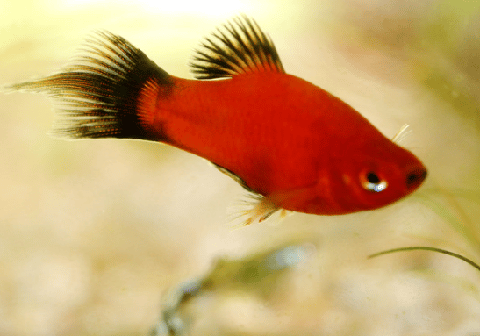
- Adult Size: 1 to 2 inches
- Color Pattern: Red body color
- Unique Traits: Black fins
One of the most common platy color variations to come across is the red wagtail platy that has a red body with black fins. Sometimes, they may have yellowish tones on their bellies.
14. Tuxedo Red Platy
- Adult Size: 1 to 2 inches
- Color Pattern: Red with black
- Unique Traits: Variegated pattern
The tuxedo red platy has a red base coat with varying degrees of black variegation. Usually, the black is very solid and appears all the way from the head to the tail; the fins are typically transparent.
15. Rainbow Pintail Platy
- Adult Size: 1 to 2 inches
- Color Pattern: Red, green, and orange body color
- Unique Traits: Pointed tail
The rainbow pintail platy is the same coloration as a regular rainbow platy, with mixtures of reds, greens, and oranges. However, these peaceful fish have been bred to have a point at the middle of their tail fins. This trait can also be seen in other platy varieties.
Final Thoughts
There are countless other platy fish varieties, including the dalmatian platy, salt and pepper platy, and parrot platy fish, with new colors and patterns being created often. Luckily, no matter what types of platy fish you decide on keeping, all of these fish have the same care requirements.
The only thing that needs to be taken into consideration when keeping platy fish is their high rate of reproduction. Otherwise, these are the perfect fish for beginner and advanced hobbyists alike!
- About the Author
- Latest Posts
I’m thrilled that you found Aquarium Store Depot! Here you’ll find information on fish, aquariums, and all things aquatics related. I’m a hobbyist (being doing this since I was 11) and here to help other hobbyists thrive with their aquariums! I adhere to a high quality Editorial Process and Review products with real life field usage and practical analysis.


